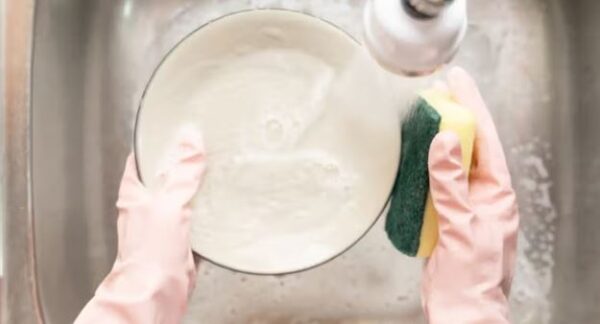Lifestyle
Did you know your kitchen sponge can cause kidney failure?

Your home is what builds your health and immunity. From keeping the indoor air quality healthy to preparing hygienic meals, everyone does things to stay fit and healthy.
However, what if one of your cleaning supplies could be the reason for your regular illnesses? Here, we are talking about kitchen sponges. These dish scrubbing sponge can be a hotspot for harmful bacteria, potentially leading to severe illnesses that are often mistaken for foodborne pathogens.
Proper sponge management, including frequent replacement and considering alternative cleaning tools, can help reduce these risks. To maintain overall health, keeping the immune system robust is crucial to combat daily exposure to germs, including those from sponges.
A recent analysis underscores the alarming amount of bacteria harbored by kitchen sponges, potentially more than toilet bowl, and possibly posing greater risks than toilets. With sponges housing up to 54 billion bacteria per cubic centimeter, they can contaminate everything they clean, increasing the risk of food poisoning, especially when considering that 5% of raw supermarket chicken may carry Salmonella. Biomedical engineers at Duke University have substantiated that kitchen sponges, due to their structure, serve as ideal environments for microbial growth, even more so than traditional agar plates.
The key concern is that illnesses often attributed to other factors, such as the food eaten at a meal, might actually be traced back to a contaminated sponge. This not only includes mild gastroenteritis but also severe illnesses such as meningitis, pneumonia, high fevers, bloody diarrhea, and life-threatening blood poisoning.
Campylobacter, a bacteria living in sponges, often sourced from undercooked chicken, unpasteurized milk, or contaminated sprouts and produce, can cause diarrhea, abdominal pain, fever, and nausea. Another organism found in sponges, Enterobacter cloacae, part of normal intestinal flora, can cause severe infections if the person is immunocompromised, leading to issues such as pneumonia, septicemia, and meningitis. E. coli, present in sponges, is typically associated with food poisoning, causing stomach ailments, bloody diarrhea, and potentially life-threatening complications if untreated.
Klebsiella, another bacteria common in sponges, is an opportunistic pathogen that can be resistant to antibiotics, leading to severe infections like pneumonia and urinary tract infections. Moraxella osloensis, which causes musty odors in laundry, also resides in sponges, posing risks of various infections, including skin lesions and arthritis. Salmonella, commonly linked to contaminated food or water, can thrive in sponges, causing fever, diarrhea, and abdominal cramps, with symptoms appearing within hours to a week.
Staphylococcus is another pathogen found in sponges, known for causing skin infections and more severe conditions like impetigo and cellulitis. Sponges can also harbor Proteus and Acinetobacter species. While microwaving sponges might help reduce bacterial load, opinions on its effectiveness vary. Research from 2007 found microwaving could eliminate up to 99.9% of germs, though some microwaves may require more time to achieve this. Boiling sponges is less effective than microwaving.
To mitigate these risks, it’s essential to avoid cross-contamination by not using the same sponge to clean different items, such as raw meat containers and utensils. Moreover, never leave sponges in standing water, microwave them wet for two minutes to reduce microbial load, and consider using dish gloves to minimize skin contamination.
Discarding plastic sponges frequently is not environmentally friendly, so alternatives like cellulose-based sponges are recommended. For those uncomfortable with using sponges, alternatives include scrub brushes, silicone brushes, single-use metal scrubbies, dishwashers, hot soapy water soaks, and frequent laundering of dish rags.






